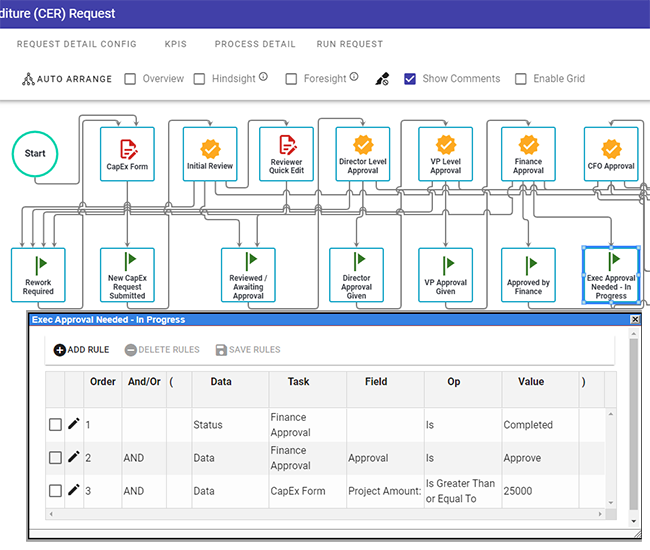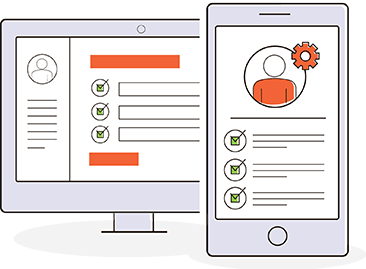Decision Automation
Decision Automation Streamlines Business Processes and Reduces Errors

What Is Decision Automation?
Decision Automation (DA): Using business rules and data to make decisions in a process without the need for human intervention. Considered part of a Decision Support System (DSS).
What Are Some Practical Uses for Decision Automation?
While we all make critical decisions every day based on our experience, education, training, and critical thinking, we make many decisions based on some fairly simple rules. For instance:
- If the amount is greater than $50,000, then it needs to be approved directly by the CIO.
- If the product type is the X Model, then it needs to be fulfilled by the Hartford distribution center.
- If the lead is based in North Dakota, then it needs to be worked by Frank.
- If the request is marked as urgent, it needs to skip step 8.
In some organizations, these decisions are made manually, by a human being, as part of the process or workflow. Naturally, there are some issues with this approach.
- Mistakes can be made.
- Decisions typically take longer.
- If the person is unavailable, the process is delayed.
- Less time is available for more valuable work like strategy.
- It's harder to change the process (old habits, training, etc.).
- Employees can suffer from "decision fatigue."
Implementing Automated Decision-Making
The examples from the above "Practical Uses" section are taken from real-life use cases we've seen implemented by our customers.
Decision points and process hand-offs are identified and discussed during the planning and implementation process. Is this a repeatable, predictable decision with a low number (or no) exceptions? If there are exceptions, are they simple enough to be part of the rule? If the answer is "Yes," there is a strong likelihood that the decision can be automated.
This means a business rule must be created. For example, "If the amount is greater than $50,000, then it needs to be approved directly by the CIO." And make a business rule that will automatically route a funding request for over $50,000 to the CIO for approval.
Example: Decision Automation for a Capital Expenditure Request
We've created a CapEx Approval process with all the required steps and approvals. Once Finance approves the CapEx Request, we add a decision point called "CFO Approval." Then we create a new rule that checks if the amount submitted in the request form was more than $50,000. The logic is:
- If the Finance Approval step is completed.
- AND Finance Approved it (they can also deny it)
- AND Amount Requested is Greater Than or Equal to 50000
THEN the CFO Approval task is initiated.

Now there can be no uncertainty when a request is submitted because the business rules automatically route large requests to the appropriate resource. That resource (in this case, the CFO) can use their knowledge and analytical tools to determine if the request should be granted. In this case, there is now both an automated and human element to the process needed.
Interested in using Workflow Automation to Automate Decision-making?
We have a variety of resources to help you on your journey to an automated workflow.

